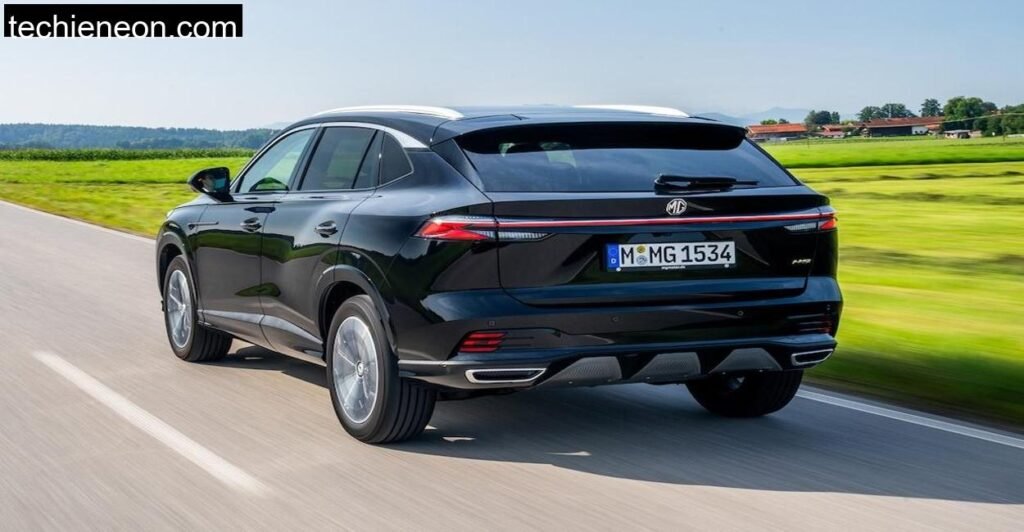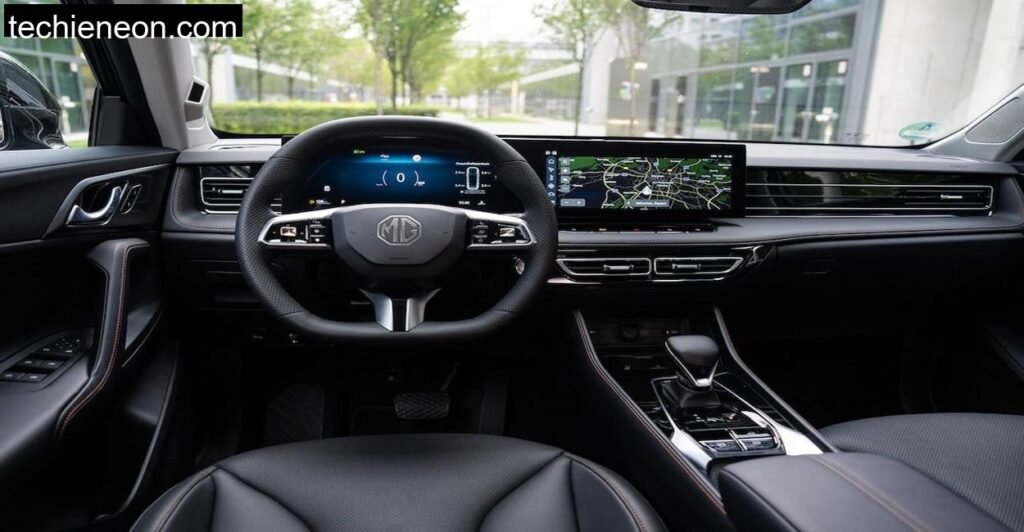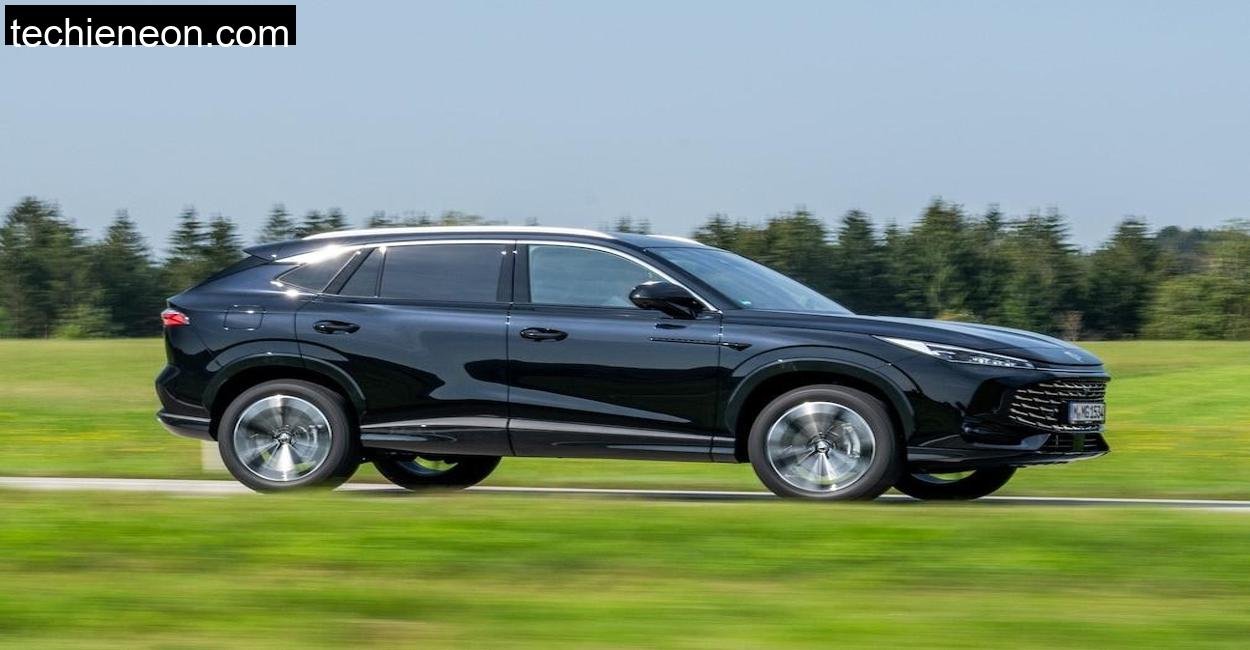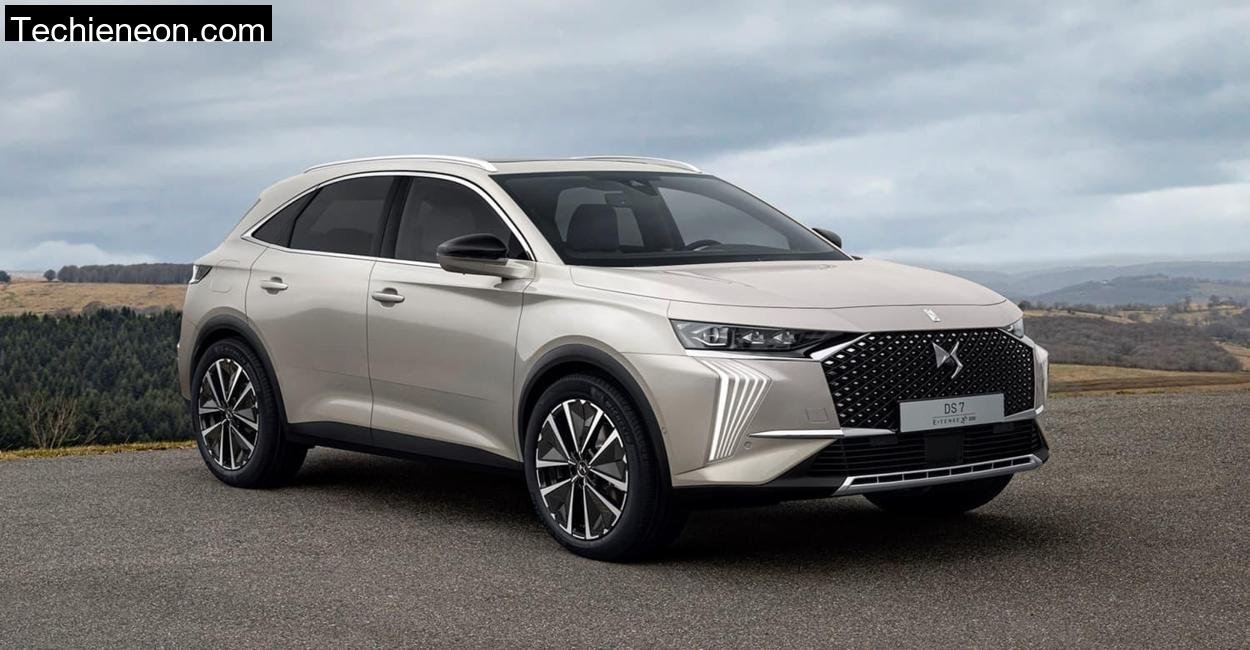First Impressions in the Shadow of the Alps
Before I ever turned the key (or rather, pushed the start button), I took a slow walk around the car. The new MG HS isn’t trying too hard. No overstyled creases, no aggressive stances. Just honest lines, a balanced shape, and a front grille that nods respectfully toward modern tastes. It doesn’t scream luxury, but it doesn’t look cheap either.
At 4.66 meters in length and riding on a 2.77-meter wheelbase, the HS is noticeably longer than the outgoing model. It sits right in the sweet spot for midsize family SUVs. The proportions look just right, and the fit and finish? Well, surprisingly good. Panel gaps are consistent, paintwork feels premium to the touch, and nothing about it suggests “budget” on the outside.
But we came to drive.
This isn’t your average plug-in hybrid setup. The electric-only range is longer than what you’d find in most hybrids at this price point. That alone had my curiosity piqued. Would it feel like two separate systems awkwardly stitched together, or a seamless, refined experience?
Cruising Blauberge: Where Theory Meets Tarmac

I set off from the small town of Kreuth, heading south into the heart of the Blauberge. The narrow mountain passes offered up everything from sudden hairpins to gentle curves, mixed with high-speed open stretches and little villages that demand a quiet, electric crawl.
That’s where the MG HS instantly impressed. Around town, the electric motor did all the work. No engine noise, no lag. It pulled cleanly and quietly, like a proper EV. The claimed 101 km electric range may be generous, but I managed a solid 87 km before the petrol engine kicked in, and that was with some spirited driving through elevation.
And when that 1.5L turbo engine did wake up? It wasn’t a rude awakening. Four cylinders means it doesn’t sound like a hairdryer in distress (unlike many three-pot hybrids). Kickdown was quick, torque delivery was strong, and the 10-speed gearbox worked invisibly in the background. You don’t drive this SUV for thrills, but it definitely doesn’t feel lazy either.
The HS is about arrival, not adrenaline. But on these roads, where even an average car can feel poetic, it handled itself well.
Cabin Life: Smart, Simple, and Family-Focused

Inside the HS, things feel familiar, yet not dated. The dashboard is dominated by a 12.3-inch digital instrument cluster and a 10.1-inch touchscreen infotainment system. Yes, most functions are touchscreen-controlled, but thankfully MG has left some physical buttons for volume, climate, and drive modes.
The layout is clean. The materials feel soft where they need to, and hard plastics are tucked away below eye level. No gimmicks, just functional design. Rear seat space is excellent, thanks to that stretched wheelbase. At nearly 1.8 meters tall, I sat behind my own driving position with room to spare.
Boot space? With 507 liters, it swallowed up my hiking gear, camera bag, and a folded picnic blanket with ease. No need to Tetris things in.
Safety features include adaptive cruise control, lane keep assist, a 360-degree camera, and even a drowsiness detection camera mounted on the A-pillar. A little Big Brother-ish, but useful for long hauls.
Real-World Economy: MG HS on a Budget Mission
This was where I really wanted the HS to prove itself. Fuel economy isn’t just about numbers; it’s about how often you stop to refuel, or if you even need to.
On my full-day loop around Blauberge, I used EV mode all the way up to Tegernsee and back into the hills. For a 160 km trip, the petrol engine kicked in only for the last 60 km. Even then, it sipped fuel gently. At the end of the day, my trip computer read 2.3 L/100 km. In a family SUV. In real driving.
Compare that to the Tiguan eHybrid, which struggles to go beyond 50 km on electric and easily tips 4–5 L/100 km in mixed use.
The MG HS’s hybrid system isn’t just about helping the engine, it genuinely reduces your fuel dependency. Especially if your commute is under 80 km a day, you might only visit the petrol station once a month.
How It Stands Against the Tiguan
Let’s not pretend MG is about to dethrone VW in Germany. But the value proposition is crystal clear. Where the Tiguan starts above €36,000 for the plug-in version, the MG HS gives you more electric range, similar space, and good-enough comfort for €27,990.
Of course, the VW wins in chassis tuning, overall refinement, and badge appeal. But in the real world, when you’re juggling school runs, weekend getaways, and grocery hauls, the MG HS doesn’t feel like a compromise. It feels like a clever choice.
Conclusion: MG HS, the Quiet Disruptor
The MG HS might not win awards for driving passion. It won’t make you giggle in corners or snap necks at traffic lights. But it will quietly, efficiently, and confidently get you where you need to go, with space, comfort, and real-world savings to back it up.
In the scenic stillness of Blauberge, with the leaves beginning to turn and mist hanging over the valleys, the MG HS didn’t feel out of place. It felt like the kind of car more people should be driving, but few have noticed yet.
That’s okay. Sometimes the smartest choices are the quietest ones.



Leave a Comment